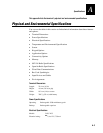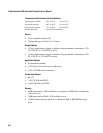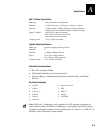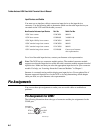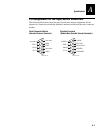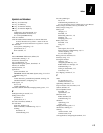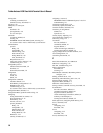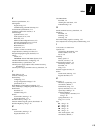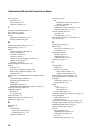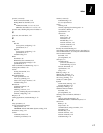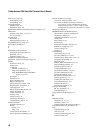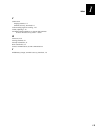
Trakker Antares 243X Hand-Held Terminal User’s Manual
nugget
39
I-8
status icons (continued)
understanding, 1-18
User Defined, 1-19
storing the terminal
humidity range, A-4
temperature range, A-4
Subnet Mask command, determining when to configure, 3-14
subnetworks
terminal, using across, 3-5, 3-6, 3-7
See also network
Suspend mode
described, 1-13
managing battery power, 1-11
Suspend/Resume key, using, 1-13
System Menu, defined, 2-5
T
TCP/IP direct connect network
checking the protocol loaded, 2-5
illustrated, 3-4, 3-6
parameters, listed, 3-14
TE 2000, See terminal emulation
temperature, operating and storage range, A-4
terminal
accessories, list of, 1-6
booting, 4-17
configuring
summary of methods, 2-3
using clone application, 2-11
using TRAKKER Antares 2400 Menu
System, 2-4 to 2-11
described, 1-3
dimensions, A-3
drives, described, 1-25
features, described, 1-4
getting started, list of steps, 1-26
keypad options, described, 1-11
managing power, 1-11
manual, audience and purpose, viii
models, described, 1-3
options, described, 1-5
resetting, 4-19
scanner, using, 1-21
terminology, defined, ix
troubleshooting, guide to, 4-3
terminal emulation
application options, A-4
keypad
options, A-4
using, 1-16
overlay options, described, 1-11
session, problems establishing, 4-12
terminal emulation (continued)
status icons, using to monitor, 3-14
See also the TE 2000 5250 Terminal Emulation
Programmer’s Guide, TE 2000 3270 Terminal
Emulation Programmer’s Guide, or the TE 2000
VT/ANSI Terminal Emulation Programmer’s Guide
terminology, defined, ix
TRAKKER Antares 2400 Menu System
ASCII control characters, entering, 2-8
check boxes, marking, 2-7
configuring the terminal, 2-4 to 2-11
exiting, 2-10
fields, filling in, 2-6
illustrated, 2-5
menus and commands, selecting, 2-6
RAM drive, configuring, 2-12
screens, exiting, 2-10
starting, 2-4
troubleshooting
audio signals, list of, 1-20
bar code symbologies, 4-5, 4-16
communications, using status icons, 3-14
configuring the terminal, 4-6
DCS 30X, 4-14
EOM or SOM configuration error, 4-6
guide to finding problems, 4-3
Intermec support services, vii
locked up application, 4-18
operating the terminal, 4-4 to 4-6
preventive maintenance, 4-20
resetting the terminal, 4-19
RF network communications, 4-11
running applications, 4-13
scanning bar code labels, 4-15
serial communications, 4-14
terminal locked up, 4-6
terminal will not turn on, 4-4
turning on the terminal
key, described, 1-13
troubleshooting, 4-4
typing characters on the keypad, 1-13
U
UDP Plus network
illustrated, 3-4, 3-5, 3-7
parameters, listed, 3-14
terminal, checking the protocol loaded, 2-5
User Defined status icon, described, 1-19
using
integrated I/O port, 1-20
serial port, 1-20
terminal emulation keypads, 1-16
terminal scanner, 1-21



